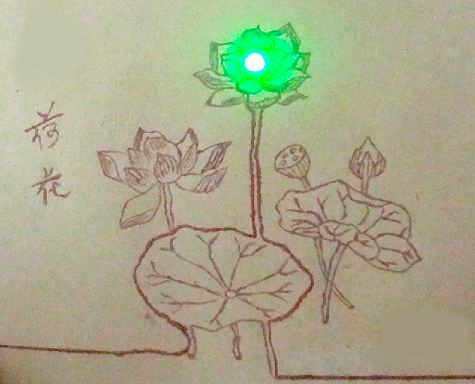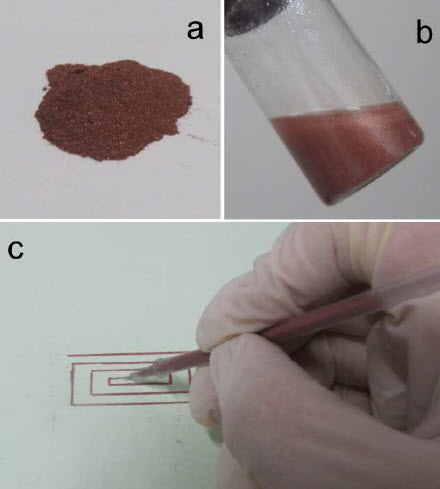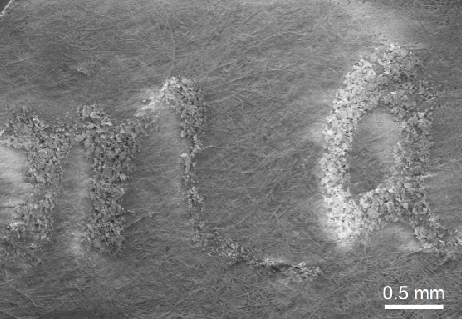Conductive ink for drawing circuits for flexible electronic books, displays, wearables
January 10, 2014

A picture drawn with conductive ink lights up a green LED (credit: American Chemical Society)
This development could be a step beyond the inkjet-printed circuits that KurzweilAI previously reported. The new process could pave the way for a wide range of new bendable gadgets, such as electronic books that look and feel more like traditional paperbacks, roll-up tablets, and wearables, according to the researchers.
[+]

(a)
Optical image of Cu nanosheet powder; (b) Optical image of Cu nanosheet
ink; (c) Optical image of conductive pen. (Credit: American Chemical
Society)
[+]
They made copper nanosheets in the laboratory, coated with silver
nanoparticles to help the copper nanosheets overlap and stack together
in a laminar (multi-layer) structure to improve conductivity. They then
incorporated this material into an ink pen, using it to draw patterns of
lines, words and even flowers on regular printer paper.
SEM image of conductive letters (credit: American Chemical Society)
[+]
To show that the ink could conduct electricity, the scientists added
small LED chips (lights) to the drawing that lit up when the circuit was
connected to a battery. To test the ink’s flexibility, they folded the
papers 1,000 times, even crumpling them up, and showed that the ink
maintained 80 to 90 percent of its conductivity.
Bending process of copper-ink-based circuits under stress (credit: American Chemical Society)
Wenjun Dong, Ge Wang and colleagues note that current efforts to create flexible circuits are “complicated, time-consuming, and expensive processes.”
The research was funded by the National Natural Science Foundation of China, the Zhejiang Provincial Natural Science Foundation of China, the National High-Tech R&D Program of China, the Program for New Century Excellent Talents in University, and the Program for Changjiang Scholars and Innovative Research Team in University.
Abstract of ACS Applied Materials & Interfaces paper
Large-area Cu nanosheets are synthesized by a strategy of Cu nanocrystal self-assembly, and then aqueous conductive Cu nanosheet ink is successfully prepared for direct writing on the conductive circuits of flexible electronics. The Cu nanocrystals, as building blocks, self-assemble along the
(¯`*• Global Source and/or more resources at http://goo.gl/zvSV7 │ www.Future-Observatory.blogspot.com and on LinkeIn Group's "Becoming Aware of the Futures" at http://goo.gl/8qKBbK │ @SciCzar │ Point of Contact: www.linkedin.com/in/AndresAgostini
 Washington
Washington